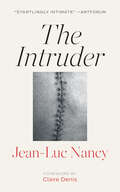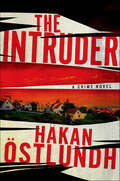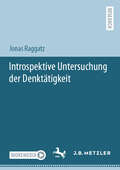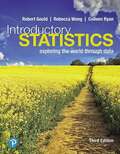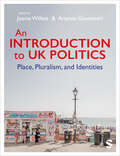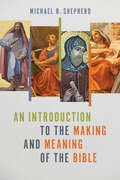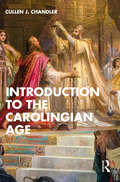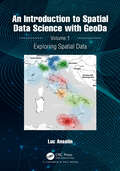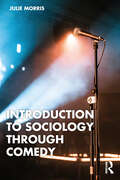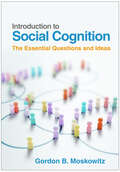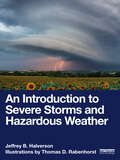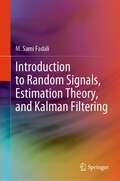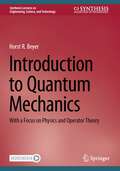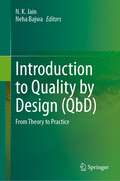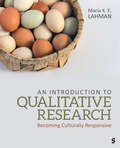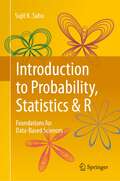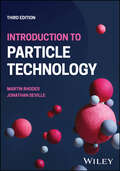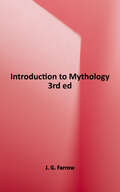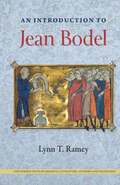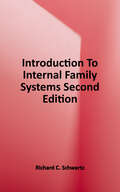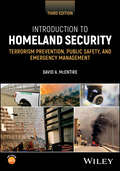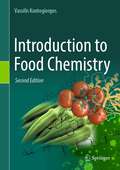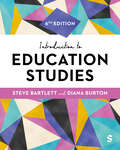- Table View
- List View
The Intruder
by Jean-Luc NancyIn 1991, Jean-Luc Nancy's heart gave out. In one of the first such procedures in France, a stranger's heart was grafted into his body. Numerous complications followed, including more surgeries and lymphatic cancer. The procedure and illnesses he endured revealed to him, in a more visceral way than most of us ever experience, the strangeness of bodily existence itself and surviving the stranger within him. During this same period, Europe began closing its borders to those seeking refuge from war and poverty. Alarmed at this trend and drawn to a highly intimate form of strangeness with which he had been living for years, Nancy set out in The Intruder to articulate how intrusion—whether of a body or a border—is not antithetical to one’s identity but constitutive of it. In 2004, Claire Denis adapted The Intruder into a film already hailed among the most important of our century. This edition includes Nancy’s and Denis’s accounts of turning philosophy into film and the text of a shorter collaboration between the two of them. Throughout, Nancy and Denis push us to recognize that to truly welcome strangers means a constant struggle against exoticism, enforced assimilation, and confidence in our own self-identity.
The Intruder: A Crime Novel
by Håkan ÖstlundhThe Intruder is an unusual story about betrayal and dark secrets. The Andersson family is being sent scary letters without a sender's name. Who could possibly want to harm them?Gotland policeman Fredrik Broman and his colleagues take the threats seriously, but cannot rule out the possibility that it is all a tasteless joke. When the threats escalate and the couple's daughter disappears, all doubts vanish. This is for real. And it is only the beginning.When the police pressure the husband, a complicated family history is revealed. What really made him return to the small island after his successful career as an international photographer? Is it really someone nearby that wants to harm the family, or does the threat come from elsewhere?Acclaimed crime novelist Håkan Östlundh combines high literary quality with high-end suspense.
Introspektive Untersuchung der Denktätigkeit
by Jonas RaggatzIn diesem Buch wird untersucht, ob es eine eigenständige kognitive Phänomenalität gibt, die nicht auf sinnliche Erfahrungen reduziert werden kann. Um diese zentrale Frage der Kognitiven-Phänomenologie-Debatte introspektiv-empirisch untersuchen zu können, wird einerseits die Methode der Introspektion mit ihren Kritikpunkten und Problemen behandelt, indem historische und zeitgenössische Ansätze introspektiver Forschung sowie deren Kritik dargestellt und evaluiert werden. Andererseits wird eine qualitativ-empirische Studie zur Denktätigkeit durchgeführt, um performativ-agentive Phänomene aufzuzeigen, die als Argumente für eine sensorisch und emotional irreduzible kognitive Phänomenalität interpretiert werden können.
Introductory Statistics: Exploring the World through Data
by Robert Gould Rebecca Wong Colleen RyanFor courses in Introductory Statistics. Data analysis for everyone Data in the real world are dynamic and sometimes messy. This complexity can intimidate students who are new to math and statistics ― but it’s also what makes statistics so interesting! Embracing these characteristics, Introductory Statistics teaches students how to explore and analyze real data to answer real-world problems. Crafted by authors who are active in the classroom and in the statistics education community, the 3rd Edition pairs a clear, conversational writing style with new and frequent opportunities to apply statistical thinking. Its tone and learning aids are designed to equip any student to analyze, interpret, and tell a story about modern data, regardless of the student’s mathematical proficiency.
An Introduction to UK Politics: Place, Pluralism, and Identities
by Joanie Willett Arianna GiovanniniA bold and unique introduction to UK Politics. This is the first textbook which breaks free from the conventional approaches that revolve around the Westminster bubble, instead drawing upon the diverse challenges facing citizens and decision-makers today. Leading experts are brought together in this carefully edited collection that spans traditional and critical approaches. An Introduction to UK Politics highlights central concerns facing British politics today, from ongoing colonial legacies to Britain’s inequality and the impact of decades of austerity. Spotlighted throughout are timely examples and latest research, drawing on topics spanning policy responses to climate change and the role of social class in educational outcomes; to the latest calls for increased devolution and shifting public opinion on UK Foreign Policy. This textbook is packed with features, including: · Case Studies to encourage critical thinking by presenting different perspectives on key events. · Theory Boxes which explore concepts in action. · Spotlight on Research showcases seminal and controversial publications to spark debate. · Annotated Reading Lists guide students to further readings. Unique to this text is a central focus on the role identities and inequalities play in contemporary British Politics. It offers students the tools to conduct analysis into the shifting dynamics in this major new action-focused, problem-based, and engaging introduction. And centrally, the book offers a compelling call to action – that is how we all have the capacity to shape British politics every day. An Introduction to UK Politics is essential reading for any undergraduate student studying UK or British Politics. Joanie Willett – Associate Professor in Politics, University of Exeter, UK Arianna Giovannini – Professor of Political Sociology, University of Urbino, Italy
An Introduction to UK Politics: Place, Pluralism, and Identities
by Joanie Willett Arianna GiovanniniA bold and unique introduction to UK Politics. This is the first textbook which breaks free from the conventional approaches that revolve around the Westminster bubble, instead drawing upon the diverse challenges facing citizens and decision-makers today. Leading experts are brought together in this carefully edited collection that spans traditional and critical approaches. An Introduction to UK Politics highlights central concerns facing British politics today, from ongoing colonial legacies to Britain’s inequality and the impact of decades of austerity. Spotlighted throughout are timely examples and latest research, drawing on topics spanning policy responses to climate change and the role of social class in educational outcomes; to the latest calls for increased devolution and shifting public opinion on UK Foreign Policy. This textbook is packed with features, including: · Case Studies to encourage critical thinking by presenting different perspectives on key events. · Theory Boxes which explore concepts in action. · Spotlight on Research showcases seminal and controversial publications to spark debate. · Annotated Reading Lists guide students to further readings. Unique to this text is a central focus on the role identities and inequalities play in contemporary British Politics. It offers students the tools to conduct analysis into the shifting dynamics in this major new action-focused, problem-based, and engaging introduction. And centrally, the book offers a compelling call to action – that is how we all have the capacity to shape British politics every day. An Introduction to UK Politics is essential reading for any undergraduate student studying UK or British Politics. Joanie Willett – Associate Professor in Politics, University of Exeter, UK Arianna Giovannini – Professor of Political Sociology, University of Urbino, Italy
An Introduction to the Making and Meaning of the Bible
by Michael B. ShepherdA comprehensive and orthodox guide to biblical origins and interpretation How did we get the Bible? How do we interpret it? And what does it mean for our lives today? Michael B. Shepherd introduces undergraduates and seminarians to these crucial questions in this reliable and thorough new textbook. Shepherd covers textual criticism, formation of the canon, and history of translation, all while remaining committed to Scripture&’s ultimate purpose—inviting us to salvation through Jesus Christ. Showing how the Bible directs its own interpretation, Shepherd encourages learners to listen to the Word of God, rather than twisting it to fit their own ends. His section-by-section treatment of the Bible encourages students to view the Bible as cohesive, while remaining sensitive to its diverse genres. Thorough and accessible, this textbook goes beyond typical historical introductions to spiritually form students learning to understand Scripture. An Introduction to the Making and Meaning of the Bible is the serious, evangelical introduction your students need and will reference for years to come.
Introduction to the Carolingian Age
by Cullen J. ChandlerIntroduction to the Carolingian Age provides an accessible history of western Europe in the eighth and ninth centuries, when arguably a truly European civilization emerged out of the transformed, former world of the Roman Empire.Through a thematical and chronological approach, this book explores the life, family, and period of Charlemagne in a clear and informative way. The secular aristocrats, ecclesiastical figures, and scholars associated with the Carolingian dynasty feature as partners in building the empire and guiding its development, and the social and cultural lives of people from the elite to the common classes are also examined. Through an engaging narrative, this study demonstrates that by the end of the ninth century, the royal house faced a series of challenges that brought about the devolution of the empire into smaller kingdoms and the loosening of the Carolingian family’s grip on monarchy. Based on up-to-date scholarship, Introduction to the Carolingian Age offers explanations of historical developments and discussions of key historiographical debates.This book is an essential resource for both undergraduate students and general readers with an interest in the history of the Carolingian period from 750–900.
An Introduction to Spatial Data Science with GeoDa: Volume 1: Exploring Spatial Data
by Luc AnselinThis book is the first in a two-volume series that introduces the field of spatial data science. It offers an accessible overview of the methodology of exploratory spatial data analysis. It also constitutes the definitive user’s guide for the widely adopted GeoDa open-source software for spatial analysis. Leveraging a large number of real-world empirical illustrations, readers will gain an understanding of the main concepts and techniques, using dynamic graphics for thematic mapping, statistical graphing, and, most centrally, the analysis of spatial autocorrelation. Key to this analysis is the concept of local indicators of spatial association, pioneered by the author and recently extended to the analysis of multivariate data.The focus of the book is on intuitive methods to discover interesting patterns in spatial data. It offers a progression from basic data manipulation through description and exploration to the identification of clusters and outliers by means of local spatial autocorrelation analysis. A distinctive approach is to spatialize intrinsically non-spatial methods by means of linking and brushing with a range of map representations, including several that are unique to the GeoDa software. The book also represents the most in-depth treatment of local spatial autocorrelation and its visualization and interpretation by means of GeoDa.The book is intended for readers interested in going beyond simple mapping of geographical data to gain insight into interesting patterns. Some basic familiarity with statistical concepts is assumed, but no previous knowledge of GIS or mapping is required.Key Features:• Includes spatial perspectives on cluster analysis• Focuses on exploring spatial data• Supplemented by extensive support with sample data sets and examples on the GeoDaCenter websiteThis book is both useful as a reference for the software and as a text for students and researchers of spatial data science.Luc Anselin is the Founding Director of the Center for Spatial Data Science at the University of Chicago, where he is also the Stein-Freiler Distinguished Service Professor of Sociology and the College, as well as a member of the Committee on Data Science. He is the creator of the GeoDa software and an active contributor to the PySAL Python open-source software library for spatial analysis. He has written widely on topics dealing with the methodology of spatial data analysis, including his classic 1988 text on Spatial Econometrics. His work has been recognized by many awards, such as his election to the U.S. National Academy of Science and the American Academy of Arts and Science.
Introduction to Sociology Through Comedy
by Julie MorrisQuestioning society and one’s place in it is a common theme in both comedy and sociology. Understanding and subverting hierarchies and norms, exploring deviance and taboos, and relating lived experience to broader questions all hold a crucial place for them both.Introduction to Sociology Through Comedy teaches foundational sociological concepts using comedy, first considering the history of sociology before employing examples from comedians – including standalone comedy bits, sketches, characters, and scenes – to illustrate a specific theory, concept, or social phenomenon. The profession of comedy is then used as a case study for the application of sociological concepts, such as impression management, social stratification, racial segregation, deviance, and stigma, allowing readers to gain familiarity with the concepts while simultaneously practicing their application.This book explains why we laugh by applying theories of humor, which will bolster students’ understanding of sociological principles by forcing them to question their own assumptions – helping them to put why they laugh into sociological terms.
Introduction to Social Cognition: The Essential Questions and Ideas
by Gordon B. MoskowitzWhy are first impressions so powerful? How do we &“know&” what others are like when we cannot read their minds? How can scientists measure biases that people do not want to admit--or do not know they have? This engaging text delves into social cognition by exploring major questions in the field through an everyday lens. Students are introduced to core concepts and processes pertaining to how people come to know themselves and understand the behavior of others. Classic and contemporary findings and experimental methods are explained. The text connects the research to pressing contemporary problems--the roots of political polarization, why even rational people fall prey to misinformation, and the best ways to reduce prejudice. Boxed definitions of key terms are included throughout.
An Introduction to Severe Storms and Hazardous Weather
by Jeffrey B. HalversonThis book presents a deep and encompassing survey of severe weather in all its forms. An Introduction to Severe Storms and Hazardous Weather is an exciting new textbook that allows students to learn the principles of atmospheric science through the drama, exhilaration, and even tragedy of severe weather.Balancing breadth and depth, Jeffrey B. Halverson adeptly combines a short, accessible introduction to the basic principles of meteorology with detailed coverage on large- and small-scale weather hazards. He draws on specific up-to-date case studies from North America to illustrate the cause of meteorological events including hurricanes, heavy snow and ice, floods, and tornadoes. Unlike existing books on the market, Halverson delves deep into the societal impacts of these events, drawing on examples from agriculture, utility infrastructure, and commercial aviation. Each chapter also features high-quality, customized color artwork by Thomas D. Rabenhorst that helps to enhance and embed learning.Thorough in its scope, and written with an impeccable focus on the science, this book will be an essential resource for introductory undergraduate courses in severe weather, natural hazards, and extreme meteorology. It is also an excellent supplemental textbook for courses on meteorology and atmospheric science.
Introduction to Random Signals, Estimation Theory, and Kalman Filtering
by M. Sami FadaliThis book provides first-year graduate engineering students and practicing engineers with a solid introduction to random signals and estimation. It includes a statistical background that is often omitted in other textbooks but is essential for a clear understanding of estimators and their properties. The book emphasizes applicability rather than mathematical theory. It includes many examples and exercises to demonstrate and learn the theory that makes extensive use of MATLAB and its toolboxes. Although there are several excellent books on random signals and Kalman filtering, this book fulfills the need for a book that is suitable for a single-semester course that covers both random signals and Kalman filters and is used for a two-semester course for students that need remedial background. For students interested in more advanced studies in the area, the book provides a bridge between typical undergraduate engineering education and more advanced graduate-level courses.
Introduction to Quantum Mechanics: With a Focus on Physics and Operator Theory (Synthesis Lectures on Engineering, Science, and Technology)
by Horst R. BeyerThis book presents an introduction to quantum mechanics that consistently uses the methods of operator theory, allowing readers to develop a physical understanding of quantum mechanical systems. The methods of operator theory are discussed throughout the book and presented with a mathematically rigorous approach. The author describes in detail how to use the methods of operator theory for analyzing quantum mechanical systems, starting with the definition of the involved physical operators (observables) up to the calculation of their spectra, spectral measures, and functional calculus. In addition, the book includes the construction of exponential functions of the involved Hamilton operators that solve the problem of time evolution.
Introduction to Quality by Design (QbD): From Theory to Practice
by N. K. Jain Neha BajwaThis book offers a comprehensive exploration of the Quality by Design (QbD) methodology, guiding readers from theory to practical application with accessible examples. It equips readers with both foundational and advanced knowledge, emphasizing the critical parameters necessary for designing pharmaceutical products that meet the highest quality standards. The book goes beyond theory to demonstrate how to effectively implement QbD principles in various aspects of pharmaceutical research and development, including analytical methods, formulation, and packaging processes. Through a step-by-step approach, it prepares researchers in pharmaceutical sciences, as well as professionals in the pharmaceutical and healthcare industries (including suppliers), to successfully integrate QbD into their work.
An Introduction to Qualitative Research: Becoming Culturally Responsive
by Maria K. LahmanThis engaging introduction to all aspects of qualitative research challenges students to consider how their research can be culturally responsive. The first part of the book introduces the foundations including theory, ethics, and reflexivity, with an emphasis on multiple methodologies, from traditional to critical and cutting-edge. The second part covers practical guidance from writing proposals to data collection, and includes a chapter dedicated to creating a culturally responsive relationship with research participants. Finally, readers engage with how the quality of research is enhanced, how data are analyzed, and how research accounts are created and disseminated. Areas vital to the health of qualitative research are addressed including systemic racism and cultural humility, with cutting-edge suggestions offered in areas like hybrid research, harnessing technology, and use of social media. Multiple identities are centered in examples throughout including race, gender, and those who are hard to reach or seldom heard in research. Textboxes featuring scholars, student researchers, and community members invite readers into dialogue in an area that is contested, swiftly shifting, and always vibrant with potential. Resources for instructors are available on a website to accompany the book at: https://edge.sagepub.com/lahman
An Introduction to Qualitative Research: Becoming Culturally Responsive
by Maria K. LahmanThis engaging introduction to all aspects of qualitative research challenges students to consider how their research can be culturally responsive. The first part of the book introduces the foundations including theory, ethics, and reflexivity, with an emphasis on multiple methodologies, from traditional to critical and cutting-edge. The second part covers practical guidance from writing proposals to data collection, and includes a chapter dedicated to creating a culturally responsive relationship with research participants. Finally, readers engage with how the quality of research is enhanced, how data are analyzed, and how research accounts are created and disseminated. Areas vital to the health of qualitative research are addressed including systemic racism and cultural humility, with cutting-edge suggestions offered in areas like hybrid research, harnessing technology, and use of social media. Multiple identities are centered in examples throughout including race, gender, and those who are hard to reach or seldom heard in research. Textboxes featuring scholars, student researchers, and community members invite readers into dialogue in an area that is contested, swiftly shifting, and always vibrant with potential. Resources for instructors are available on a website to accompany the book at: https://edge.sagepub.com/lahman
Introduction to Probability, Statistics & R: Foundations for Data-Based Sciences
by Sujit K. SahuA strong grasp of elementary statistics and probability, along with basic skills in using R, is essential for various scientific disciplines reliant on data analysis. This book serves as a gateway to learning statistical methods from scratch, assuming a solid background in high school mathematics. Readers gradually progress from basic concepts to advanced statistical modelling, with examples from actuarial, biological, ecological, engineering, environmental, medicine, and social sciences highlighting the real-world relevance of the subject. An accompanying R package enables seamless practice and immediate application, making it ideal for beginners. The book comprises 19 chapters divided into five parts. Part I introduces basic statistics and the R software package, teaching readers to calculate simple statistics and create basic data graphs. Part II delves into probability concepts, including rules and conditional probability, and introduces widelyused discrete and continuous probability distributions (e.g., binomial, Poisson, normal, log-normal). It concludes with the central limit theorem and joint distributions for multiple random variables. Part III explores statistical inference, covering point and interval estimation, hypothesis testing, and Bayesian inference. This part is intentionally less technical, making it accessible to readers without an extensive mathematical background. Part IV addresses advanced probability and statistical distribution theory, assuming some familiarity with (or concurrent study of) mathematical methods like advanced calculus and linear algebra. Finally, Part V focuses on advanced statistical modelling using simple and multiple regression and analysis of variance, laying the foundation for further studies in machine learning and data science applicable to various data and decision analytics contexts. Based on years of teaching experience, this textbook includes numerousexercises and makes extensive use of R, making it ideal for year-long data science modules and courses. In addition to university courses, the book amply covers the syllabus for the Actuarial Statistics 1 examination of the Institute and Faculty of Actuaries in London. It also provides a solid foundation for postgraduate studies in statistics and probability, or a reliable reference for statistics.
Introduction to Particle Technology
by Martin J. Rhodes Jonathan SevilleINTRODUCTION TO PARTICLE TECHNOLOGY A new edition of the indispensable guide to particulates and powders Particle technology concerns the formation, processing and properties of the particles and powders which make up many of the products that surround us. Such products range from the cement and aggregate in the built environment to pharmaceuticals and processed foods. Most of the process industries involve particles, either as essential components such as catalysts or as intermediate or final products, and minerals such as the rare earths that are generally mined and processed in particulate form. Particles can have many beneficial uses but they can also cause harm in the environment and, through inhalation, to the individual. In all cases, the powder properties, particularly particle size, are crucially important. This well-known textbook, now in its 3rd edition, provides an easily-understood introduction to the underlying scientific principles of particle technology, together with examples of how these principles can be used in practical design and operation of industrial processes. Each chapter contains both worked examples and exercises for the student. Based on feedback from students and users of the earlier editions, this revised and expanded text includes introductory chapters on particles as products and on computational methods. The topics have been selected to give coverage of the broad areas of particle technology and include: Characterization (size analysis, surface area) Processing (granulation, fluidization) Particle formation (granulation, crystallisation, tableting, size reduction) Storage and transport (hopper design, pneumatic conveying, standpipes) Separation (filtration, settling, cyclones) Safety (fire and explosion hazards, health hazards) Engineering the properties of particulate systems to achieve desired product performance Discrete element modelling of particulate systems Introduction to Particle Technology, 3rd Edition is essential reading for students of chemical engineering. The text is also recommended reading for students of mechanical engineering, applied chemistry, pharmaceutics, physics, mineral processing, and metallurgy, and is an excellent source for practising engineers and scientists looking to establish a working knowledge of the subject.
Introduction to Mythology: Third Edition
by J. G. FarrowThe word myth is often misunderstood, to the point that some people can even be quite offended when it is used in the “wrong” context. If the term is so sensitive, then why study it or even acknowledge the validity of such a subject as mythology in our class-rooms? When we study the subject at college or university level, there is a lot more to it than just the adventures of gods or heroes who, in many cases, are not even believed in any more, at least in a literal sense. At this level of the subject we are far more concerned with the real people who actually did (or in some cases still do) believe in the gods and heroes of the systems we will be studying in the course. We are also concerned with the critics and theorists who have been contributing to the subject over the last two centuries. We cannot understand myths fully without having in our minds a complete “tool kit” of theories and interpretations, some of which are new, others which have stood the test of time for a century or more. If you are buying this book, you are probably a serious student who wants to know more about the subject, not just get a couple more credits (though we all know what a big incentive that can be). Mythology has grown as a subject in the past century, especially in the American higher education system. This is a great contrast from European countries, where students are expected to study the original languages of the sources first (especially Latin and Greek), then get to grips with the myths when they read the works of ancient poets such as Homer, Hesiod, Vergil, and Ovid. Even in our system we cannot avoid one basic fact: the word source is the most important word in mythology. Don’t panic the sources used in this book are all translated into plain English for you. Care has been taken to keep it simple. Where there are important issues arising from the use of a particular word or name in a written source, there are footnotes to explain those issues. The shorter examples given in chapters 9 to 12 of this book are each followed by discussion questions which are designed to get you, as a beginning student of mythology, used to knowing what kind of details to look for and how to recognize structures. It helps if you know some actual history and geography, too. At no point must we ever forget that our sources were real people, living in a real place and at a real time.
An Introduction to Jean Bodel (New Perspectives on Medieval Literature: Authors and Traditions)
by Lynn T. RameyBringing the work of a highly influential medieval French writer to English-speaking audiences for the first time This book explores the life and works of Jean Bodel, an influential author who lived in twelfth-century Arras, France. A versatile poet, playwright, and epic writer who established new genres such as fabliaux and the mystery play, Bodel remains relatively unknown to Anglophone audiences. Lynn Ramey offers translations and summaries of works never published before in English while delving into Bodel’s historical and cultural context. After a brief introduction to the poet, Ramey highlights the stimulating and cosmopolitan environment of Arras, considering the influence of the Crusades and social movements in shaping Bodel’s works. Next, Ramey provides an extensive survey of all of Bodel’s known writing across his prolific career by genre, from his most well-known work, The Play of Saint Nicholas (Le Jeu de saint Nicolas), to his final piece, Farewell (Les Congés), which offers important insight into his diagnosis of leprosy toward the end of his life. Ramey translates several pieces including pastourelles, fabliaux, and selections from the Song of the Saxons (Chanson des Saisnes). The book also includes information on Bodel’s sources, a chronology, and a glossary. With much of the existing scholarship on Bodel only available in French, this book bridges a gap in knowledge of the poet and serves as a useful resource for both students and specialists. An Introduction to Jean Bodel allows a broader audience to engage with the writer’s wide-ranging work and contributions to literary history.A volume in the series New Perspectives on Medieval Literature: Authors and Traditions, edited by R. Barton Palmer and Tison Pugh
Introduction To Internal Family Systems
by Richard C. SchwartzA highly accessible introduction to a therapeutic approach that brings our inner “parts” into harmony and allows our core Self to lead We’re all familiar with self-talk, self-doubt, and self-judgment―yet most of us still view ourselves as if we have one uniform mind. Dr. Richard Schwartz’s breakthrough was recognizing that we each contain an “internal family” of distinct parts―and that treating these parts with curiosity, respect, and empathy vastly expands our capacity to heal. Over the past two decades, Internal Family Systems (IFS) has transformed the practice of psychotherapy. With Introduction to Internal Family Systems, the creator of IFS presents the ideal layperson’s guide for understanding this empowering, effective, and non-pathologizing approach to self-discovery and healing. Here, Dr. Schwartz shares evidence, case studies, and self-care tools to help you: - Shift from the limiting “mono-mind” paradigm into an appreciation of your marvelous, multidimensional nature - Unburden your wounded parts from extreme beliefs, emotions, and addictions - Demystify the most commonly misunderstood parts―the Exiles, Managers, and Firefighters - Transform your most challenging parts from inner obstacles to invaluable allies - Embrace the existence of innate human goodness―in yourself and others - Connect with the true Self that is greater than the sum of your parts “The most wonderful discovery I have made is that as you do this work, you release, or liberate, what I call your Self or your True Self―the calm, compassionate essence of who you are,” says Dr. Schwartz. “When the Self becomes the leading intelligence in our lives, we create more harmony―both within ourselves and in our external lives.” For therapists, their clients, and anyone interested in understanding and healing themselves, here is an essential guide to a revolutionary approach to self-realization, mental wellness, and transformation.
Introduction to Homeland Security: Terrorism Prevention, Public Safety, and Emergency Management
by David A. McEntireExplore the growing concerns about security with this vital book Homeland Security has never been a more important part of the American social and political fabric. Risk assessment, attack prediction and prevention, preparedness measures, response to terrorist activity, and natural disaster management all fall under the purview of homeland security. It is a key focus of the US security state, which has expanded massively in recent decades. Introduction to Homeland Security provides an overview of this subject for professors, students, and practitioners in the field. Drawing upon a rich foundation of scholarship and academic literature, it focuses principally on terrorism prevention and protection, and offers new content related to novel threats and security concerns. Its practitioner-centered approach and attention to both governmental and non-governmental stakeholders make it an indispensable introduction to the subject. Readers will also find: Coverage of the four traditional phases of emergency management New and additional treatment of border control, drug trafficking, organized crime, mass shootings, protests, riots, pandemics, and climate change Companion websites including extensive pedagogical materials, student self-assessment tests, and an image gallery Introduction to Homeland Security is ideal for professors and students in homeland security and emergency management programs, as well as practitioners involved in this important profession.
Introduction to Food Chemistry
by Vassilis KontogiorgosThe complexity of food chemistry makes it a challenging subject for students studying in a food science course. Although there are excellent food chemistry books available in the market they have two major flaws: they are either encyclopedic or they are not pitched correctly to undergraduate food science students. The first problem creates difficulties for students to identify what is important and how much they need to know. The second problem arises when the book is written by authors that are not food scientists (e.g., chemists), they are not academics that are engaged with teaching or they are not sufficiently qualified to teach. In this case, it is difficult to find links between the chemistry of foods and its relevance to applications or, quite frequently, future employment prospects of the student. Introduction to Food Chemistry, 2nd Edition bridges this gap in the relevant literature, as it employs the latest pedagogical theories in textbook writing to present the subject to students with broad range of cognitive skills. This book presents specific learning objectives for each chapter and is self-contained so students will not need to search for essential information outside the textbook. This new edition has been expanded to include chapters on sweeteners, glass transition, amino acids, proteins for major food commodities and food additives. All of the original chapters have been updated and expanded to include new research and technologies. To support learning, the book has:Didactic elements with information being conveyed with 3D-figures, color-coded schemes and graphs, annotations on figures that link it to the text descriptionsBuilt-in pedagogy and learning activities at the end of each chapter that are linked to the learning objectives.Keywords and concepts for online search to instigate curiosity for further studies.Conversational writing style without losing academic rigorTo support lecturers, the book has:Helps focus teaching preparation on key aspects of food chemistry relevant to both industry and modern research.Aids the preparation of exams, assignments and other types of assessment or learning activities.For lecturers in search of a singular source to aid in their introductory food chemistry courses, look no further than this expanded new edition of Introduction to Food Chemistry.
Introduction to Education Studies
by Steve Bartlett Diana M BurtonIn this fully updated sixth edition of this much-loved textbook, students will be introduced to different ways of looking at education, supported by links to classic and contemporary research. Built around the essential themes of psychology, history, policy and sociology, this new edition explores a range of contemporary topics found on Education studies courses, including: UK education policy since 2020, including policy responses to the COVID-19 pandemic Decolonising the curriculum and social justice Education studies and student employability Expanded coverage of cognitive psychological theories of learning
